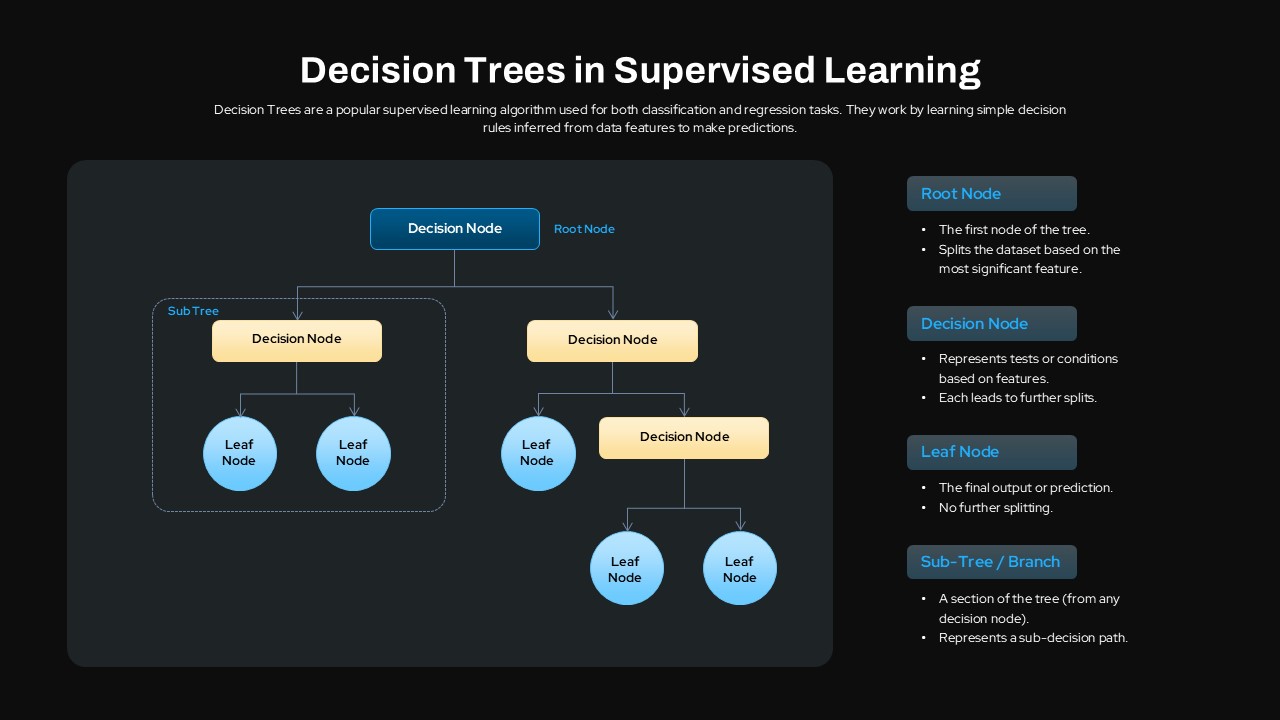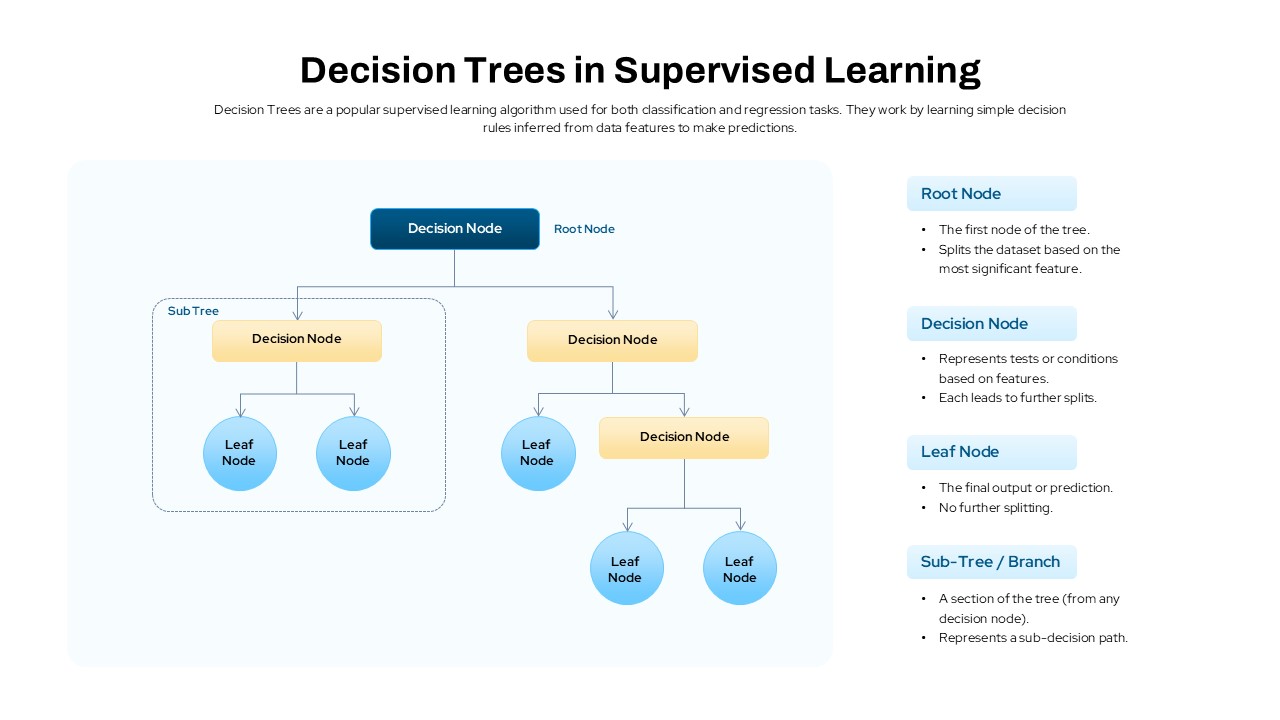decision-trees-supervised-learning-dark-template-powerpoint-google-slides


Description
This slide visually explains the structure and components of a decision tree used in supervised learning. A central diagram displays a root decision node in a dark blue gradient rectangle, splitting into left and right branches. The left branch encloses a Sub-Tree section highlighted by a dashed container, containing a secondary decision node (gold gradient) that splits into two leaf nodes (light blue circles). The right branch shows another decision node that leads to one leaf node and then a further split into an additional decision node and two leaf nodes.
On the right side, four labeled icon blocks define each element—Root Node, Decision Node, Leaf Node and Sub-Tree/Branch—with bullet points explaining their roles in classification and regression tasks. A brief subtitle introduces decision trees as model-free algorithms that infer rules from data features to make predictions. The design uses subtle drop shadows, rounded corners and gradient fills to create depth, while an airy light-blue container and clear typography maintain readability.
Both dark and light theme variants ensure high contrast in any environment, and editable master slides allow you to customize node labels, colors, dashed container styles and explanatory text. All shapes are vector-based, enabling resizing or relocation without loss of quality. Use the built-in animation placeholders to step through each branch or highlight specific nodes during presentations. Nodes, branches and containers can be recolored to match brand guidelines seamlessly. This decision tree template makes abstract algorithmic workflows tangible and memorable.
Who is it for
Data scientists, machine learning engineers, AI researchers and technical educators will find this slide invaluable when explaining decision tree structures, teaching supervised learning concepts or presenting model workflows. Analytics consultants and graduate-level instructors can also leverage it to illustrate hierarchical splits and node definitions.
Other Uses
Beyond decision trees, repurpose this template to visualize any hierarchical or branching process—such as organizational charts, troubleshooting guides or feature selection workflows. Simply relabel nodes, adjust branch counts and swap icons to map out your specific application.
Login to download this file

















































